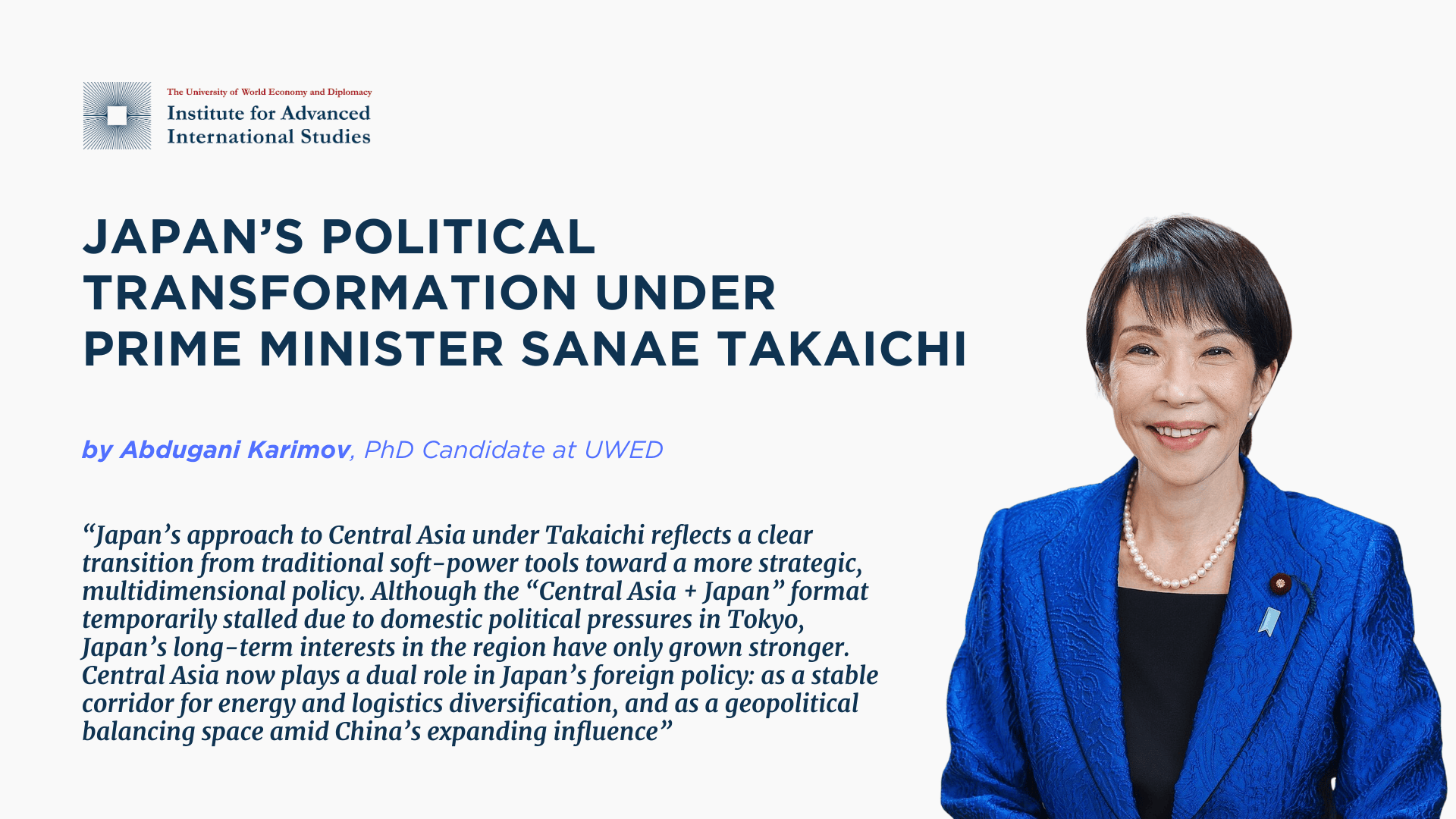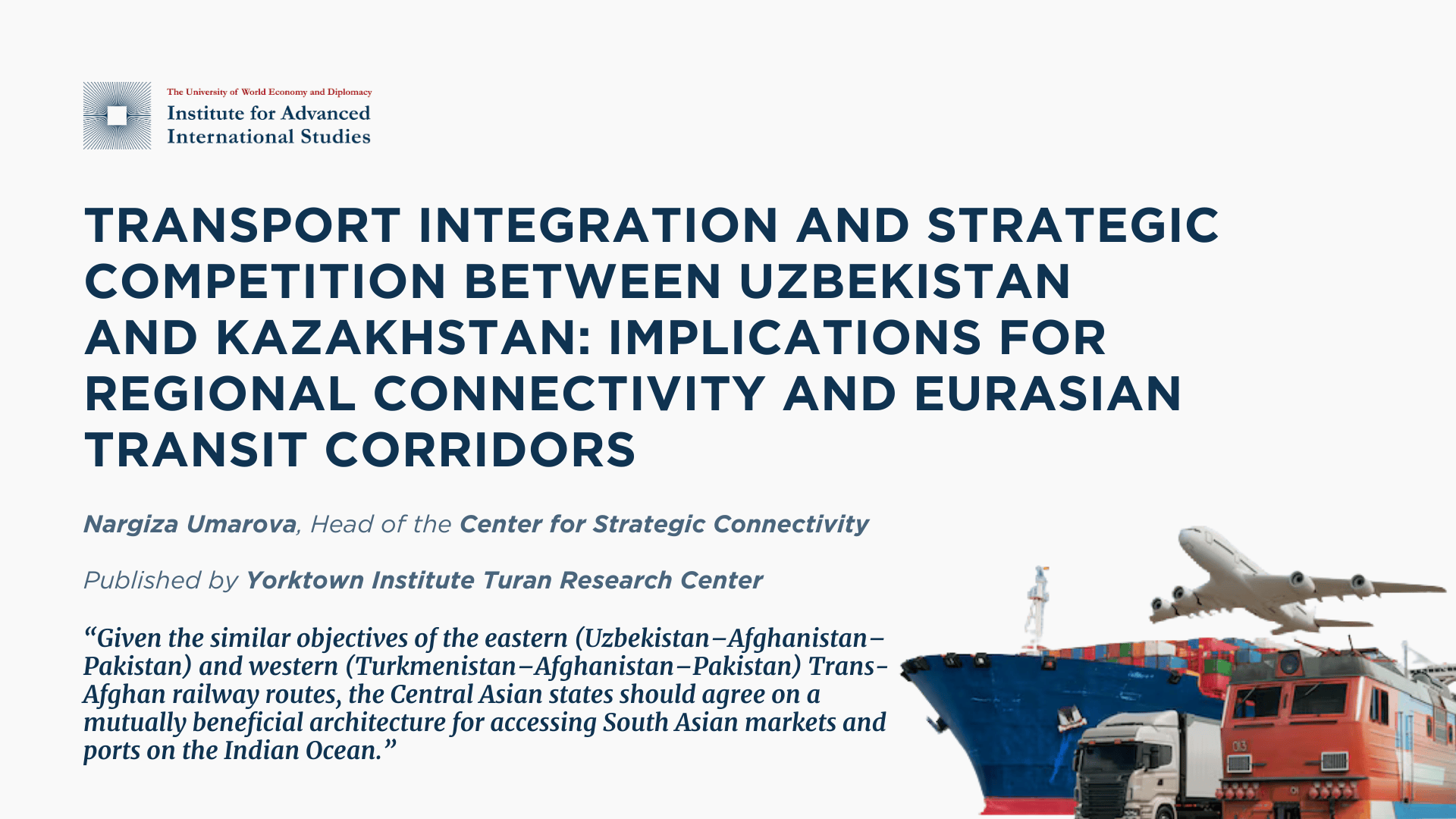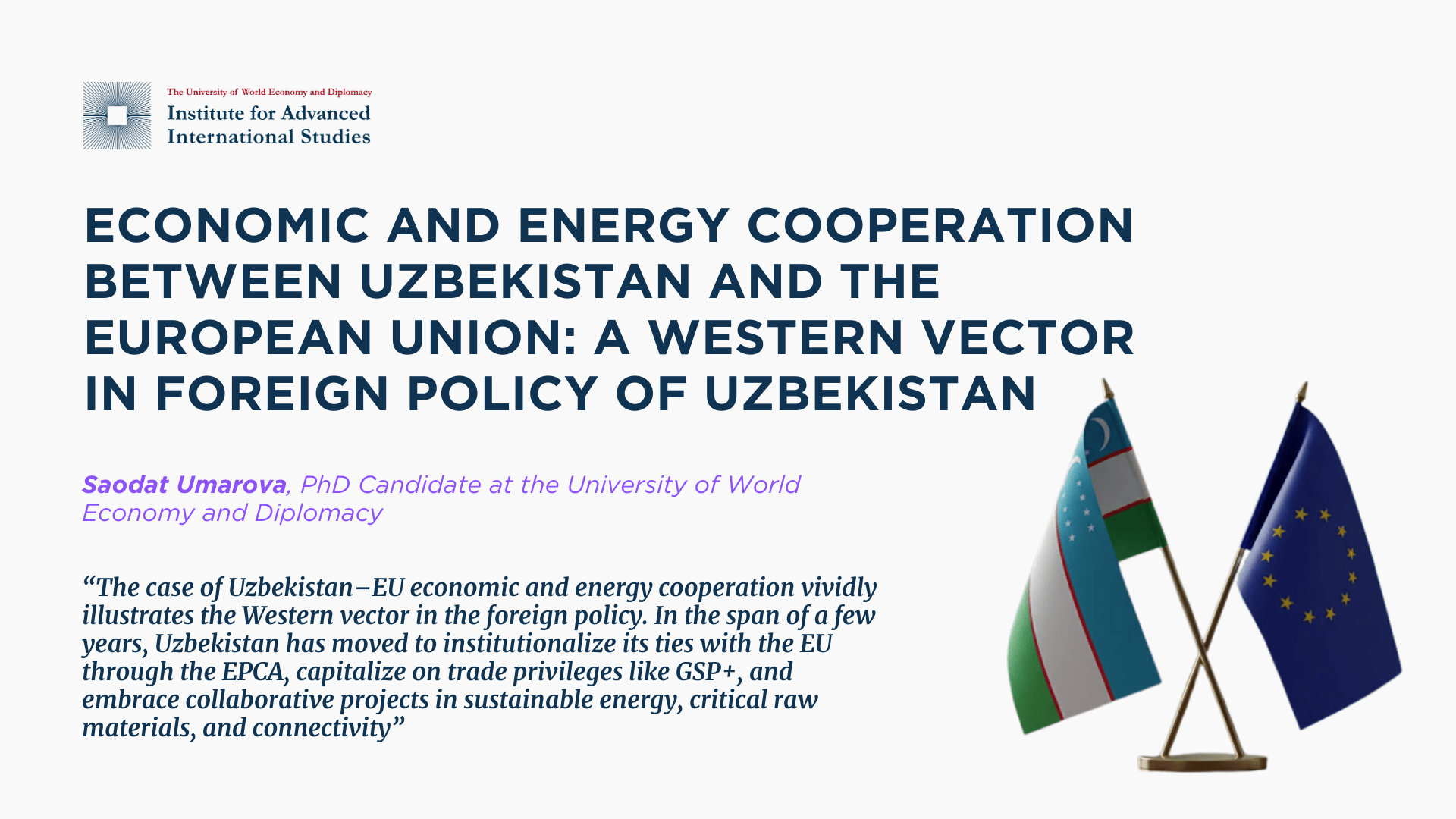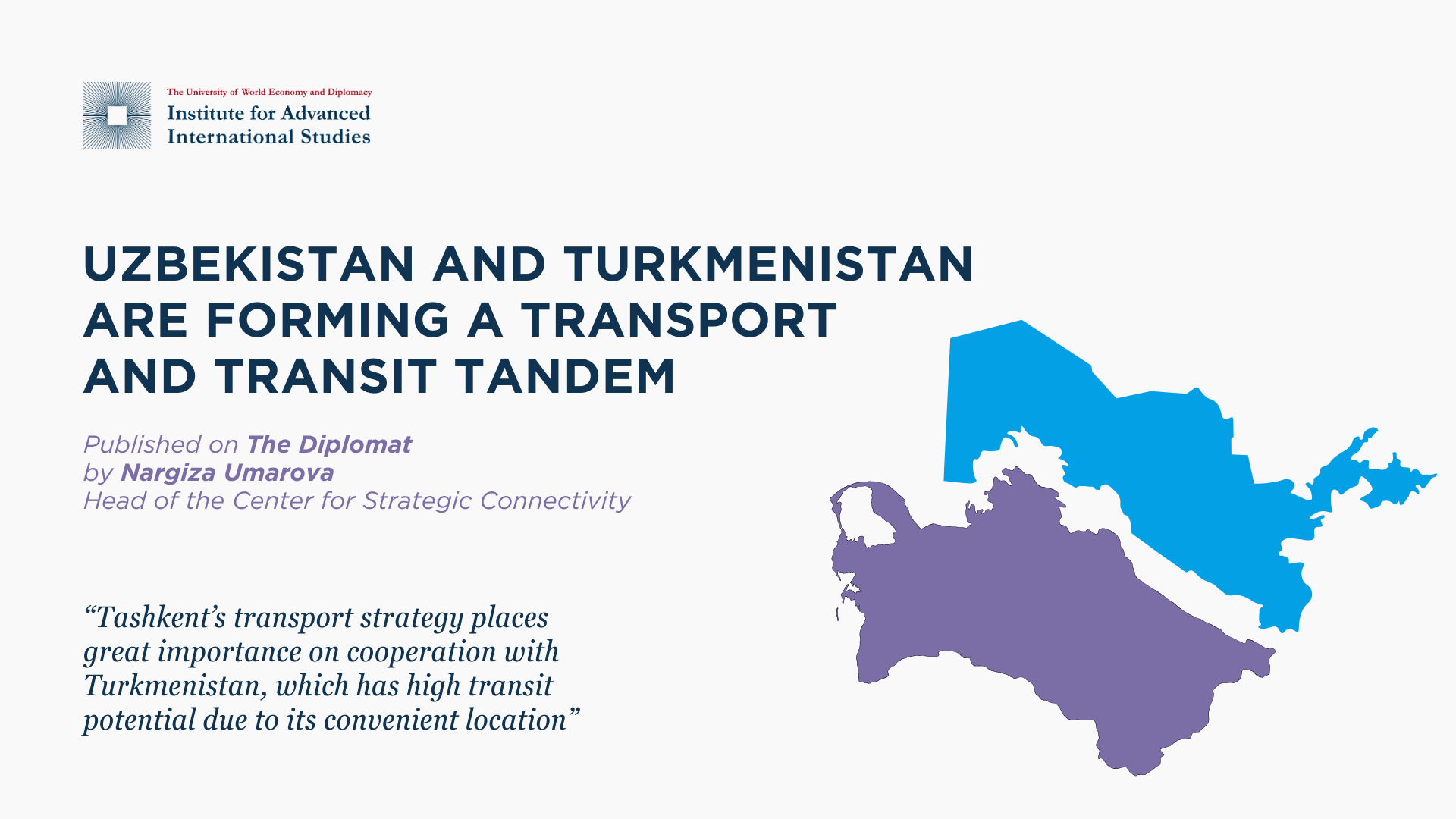In her policy brief “Uzbekistan May Benefit from Herat to Mazar-i-Sharif Railway Project”, published by Jamestown Foundation, Nargiza Umarova analyses the recent agreement between Afghanistan, Iran and Türkiye to jointly build a railway line from Herat to Mazar-i-Sharif as part of the Five Nations Railway Corridor (FNRC) and explores its strategic implications for Uzbekistan. She shows that the FNRC, which connects China with Kyrgyzstan, Tajikistan, Afghanistan and Iran and further on to Türkiye and Europe, is conceived as one of the shortest land routes between East Asia and Europe. As such, it not only strengthens Tehran’s and Kabul’s ambitions to deepen trade with China and diversify their eastern trade routes, but also creates a new configuration of East–West connectivity that competes with existing Central Asian transit routes, including the Trans-Caspian “Middle Corridor.”
Umarova argues that this emerging architecture has profound consequences for Uzbekistan’s role as a transit state. On the one hand, the Herat–Mazar-i-Sharif railway could open up new opportunities for Tashkent by providing more direct access to Iran’s road network and seaports, potentially bypassing Turkmenistan and shortening the distance to key export markets. On the other hand, if Uzbekistan remains outside the FNRC, cargo flows between China and Europe may increasingly be redirected via Tajikistan and Iran, eroding Uzbekistan’s current position as a major overland transit hub. The author illustrates this with the gradual development of the Khaf–Herat railway, which already allows significant volumes of cargo to pass between Iran, Afghanistan and European markets and could, if extended north and east, link more tightly to Central Asian and Chinese networks.
The brief places these dynamics in the context of Uzbekistan’s own, sometimes inconsistent, railway diplomacy in Afghanistan. Umarova recalls that Tashkent initially backed the Mazar-i-Sharif–Sheberghan–Maimana–Herat railway project, signed in 2017 and intended to connect to the Khaf–Herat line, but later shifted its attention to an alternative trans-Afghan “Kabul Corridor” towards Pakistan. In parallel, Afghanistan and Tajikistan agreed on a Sher Khan Bandar–Jaloliddini Balkhi line that has stalled due to financing constraints. After the Taliban’s return to power, new proposals emerged, including a Mazar–Herat–Kandahar line pitched to Russia and statements about possible Uzbek participation, but with no clear confirmation from Tashkent. Umarova highlights that the choice of track gauge (1,520 mm CIS standard if built by Russia or Uzbekistan versus 1,435 mm European standard if built by Iran and Türkiye) symbolises competing visions: integrating Afghanistan either into the CIS-centric North–South grid or primarily into the FNRC East–West axis.
In conclusion, Umarova contends that the simultaneous development of the FNRC and of the China–Kyrgyzstan–Uzbekistan railway, which is expected to shorten the China–Europe route by roughly 900 kilometres when linked to the Southern Corridor via Iran and Türkiye, creates both a risk and a window of opportunity for Uzbekistan. If Tashkent does not actively seek involvement in the FNRC—potentially through a China–Kyrgyzstan–Uzbekistan–Tajikistan–Uzbekistan–Afghanistan–Iran chain—it may see transit flows bypass its territory. If, however, it positions itself as a bridge between the new East–West corridor and existing Central Asian and Eurasian routes, Uzbekistan can become a direct beneficiary of the Herat–Mazar-i-Sharif railway and consolidate its status as a key node in the evolving Eurasian transport system.
Read on Jamestown Foundation
* The Institute for Advanced International Studies (IAIS) does not take institutional positions on any issues; the views represented herein are those of the author(s) and do not necessarily reflect the views of the IAIS.






